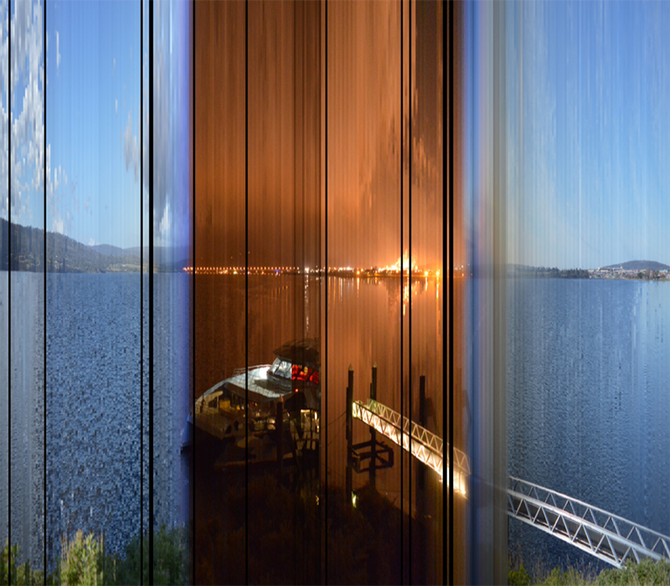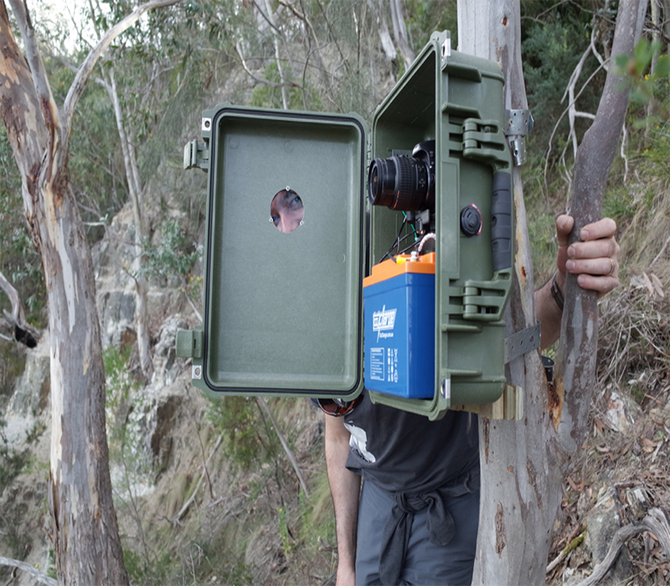It’s a lifeline for many Tasmanians, yet it’s one of the most polluted rivers in the industrial world. Here’s how visual artists highlighted the very real plight of the iconic Derwent River.
The Derwent River is a major supplier of water and power to hundreds of thousands of Tasmanians and represents an important part of the culture, industry, and life of the state.
It also happens to be one of the most polluted rivers in the industrial world.
In an effort to highlight the dire state of the Derwent River, as well as the creative solutions that could reverse some of the very serious effects of sewage and heavy metal pollution, local researchers have been looking at new ways to engage the public.
For University of Tasmania visual artists Dr Martin Walch and Dr David Stephenson, the answer involved travelling the length of the river, and revealing the environment in ways that it’s never been seen before.
The idea was to change how Tasmanians perceive the river and their place alongside it.
“We aren’t trying to be didactic, we just want to engage people with the river and help them realise, ‘I value the river and I want to make better choices about it,’” says Dr Walch.
Pairing nature with technology
How humans interact with their environment has been an integral part of Dr Walch’s work as a visual artist.
It all started with his first photographs taken while trekking through the Lion’s Den – a short canyon filled with shattered dolerite boulders in Tasmania’s Mount Field National Park.
“I was walking along this path through the rocky scree and alpine herbage, and in the heavy fog, you could barely see in front of you,” he recalls.
“It looked magical, like you could project your imagination onto the landscape, and it made me feel something that I wanted to communicate.”
This ability to tap into and engage with the quiet mystery of Tasmania’s wilderness paired perfectly with Dr Walch’s fascination with technology – in particular how it could replicate not just what he was seeing, but all kinds of other factors surrounding him in a particular moment.
“I’ve always had an interest in the machines I was using to capture images,” he says.
“I grew up in the ‘60s and saw the shift from analogue to digital, and it got to the point where I realised contemporary photos are not just images, but containers for information – there are watermarks and geo-locations. I wanted to learn how to engage with this concept.”
Dr Walch teamed up with Dr Stephenson to design the Derwent Project, a collaboration where they could explore new ways of visualising the complex natural and cultural history of the Derwent River system.

Still from Derwent Time Lapse Array Time Slice at MONA Credit: Martin Walch and David Stephenson
Faced with prohibitive equipment costs of working in remote locations, the pair used a range of lightweight high-definition video cameras attached in a 360° array on small boats to capture the sights and sounds of the river.
They also set up 12 stationary camera stations along the length of the river to record how the environment changed with the seasons. This involved designing a simple, low-maintenance system of Nikon DSLRs with a timer remote, hand-made waterproof equipment cases, and a 12-volt battery that would last for several months.
This setup allowed them to capture still photographs every 5 minutes, which would add up to 3,456 images per day and more than 1.25 million per year.
These fixed stations made it possible to record the tiniest changes in the river that the public would never have the chance to see in person.
Through different eyes
In an effort to push the boundaries of what had been done before with photography, Dr Walch come up with new ways to view the images they’d captured using open-source Raspberry Pi computers.
He and Dr Stephenson stitched the footage together to create a 360° immersive experience of each major part in the river. Dr Walch also designed his own format of time-lapse footage called Time Slice, which cuts photographic stills into 320 vertical slices and reassembles them to display a day passing on the river as a dynamic and beautiful moving image.
In 2017, the project was seen by 32,344 people when exhibited at the Tasmanian Museum and Art Gallery in Hobart. The exhibition was launched in partnership with Hydro Tasmania, Australia's largest generator of renewable energy.
“We got a lot of feedback from the exhibition,” says Dr Walch. “It raised awareness about the river, and people wanted to know more. It made them see their own place in the river and raised its profile in their eyes. They could see that it’s unique, globally.”
Dr Walch says the Derwent Project wouldn’t have been able to capture what it did without the support of Hydro Tasmania staff, who would routinely accompany them and give them legal access to private property so they could set up and maintain their camera equipment.

Installing a camera at Taroona in Hobart. Credit: Martin Walch and David Stephenson
In return, Hydro Tasmania gained access to an extensive record of the river that could inform their future operations.
“There was this incredible public engagement that Hydro Tasmania were able to gain through the exhibition,” says Dr Walch. “We were able to bring greater awareness of their role as custodians of the river to the public, and we created an important historic snapshot that they now have in their archive.”
In future, Dr Walch would like to see the innovation behind the Derwent Project being used to raise awareness about other important Australian rivers.
“We’d like to use this technology to map other rivers like the Murray-Darling,” he says.
“We’re really losing the debate about environmental safeguards there.”
If the Derwent Project has achieved one thing, it’s convincing Tasmanians to care about their river.
“The Derwent River is such a central thing to Hobart, and the river has been a big part of my life,” says Dr Walch.
“The primary job of art-making is to communicate our perceptions and perspectives as artists. Art gives you permission to feel and to question your values.”
Key facts about the Derwent Project:
- The Derwent Project exhibition received 32,344 visitors.
- All 12 camera stations along the Derwent River captured one photo every 5 minutes, which equates to 3,456 images every day, and 1,258,000 images per year.
- Hydro Tasmania uses the Derwent River to generate more than 9,000 gigawatts of power each year.
Interested in conducting your own research? Apply now to become a research student.
Interested in partnering with the University of Tasmania? Find out more here.